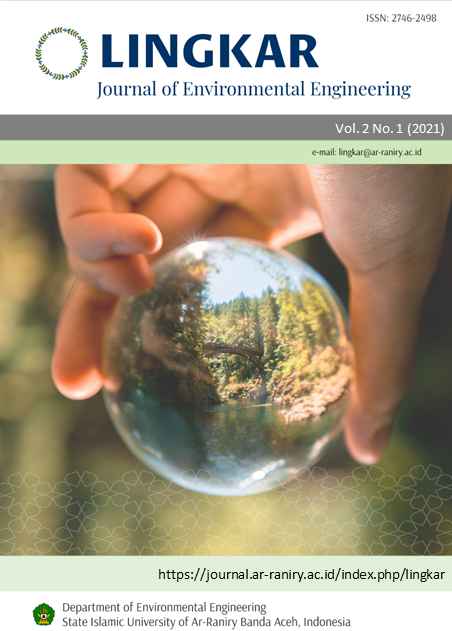EFEKTIVITAS PENGGUNAAN BIJI ASAM JAWA (Tamarindus Indica L.) SEBAGAI BIOKOAGULAN MENGGUNAKAN METODE KOMBINASI KOAGULASI-FLOKULASI DAN FILTRASI TERHADAP LIMBAH CAIR INDUSTRI PENGOLAHAN IKAN UD. NAGATA TUNA
DOI:
https://doi.org/10.22373/ljee.v2i1.1887Abstract
Fish processing industrial wastewater must be treated before being discharged into water bodies. This study aims to continue previous research to reduce pollutant levels in fish processing industrial wastewater in accordance with wastewater quality standards. In this study, coagulation-flocculation processing was carried out using tamarind seed powder and filtration processing using filter media consisting of zeolite, silica sand, activated carbon and filter sponges to reduce levels of Turbidity, TSS, COD, BOD and neutralize pH in water. fish processing industrial waste. The results showed that there was an effect of the coagulant dose of tamarind seeds on changes in the parameters of pH, turbidity, TSS, COD and BOD with an optimum dose of 2 g/L was able to change the pH value to 6.5 and reduce turbidity levels to 130.2 NTU, reduce levels of turbidity. TSS to 207 mg/l, lowers COD levels to 412.33 mg/l and lowers BOD levels to 400.25 mg/l. However, this reduction has not been able to reduce the levels of turbidity, TSS, COD and BOD according to quality standards. After the wastewater from the fish processing industry with a dose of 2 g/l tamarind seeds followed by a filtration process, it was able to increase the pH value to 7.7 and reduce turbidity levels to 29.4 NTU with an efficiency of 77.41%, lowering TSS levels to 39. ,5 mg/l with an efficiency of 80.91%, reducing COD levels to 119.88 mg/l with an efficiency of 70.92% and reducing BOD levels to 42.21 mg/l with an efficiency of 89.45%. The test results of the five parameters, namely pH, turbidity, TSS, COD and BOD, were in accordance with the quality standards of the liquid waste of the fish processingindustry.




